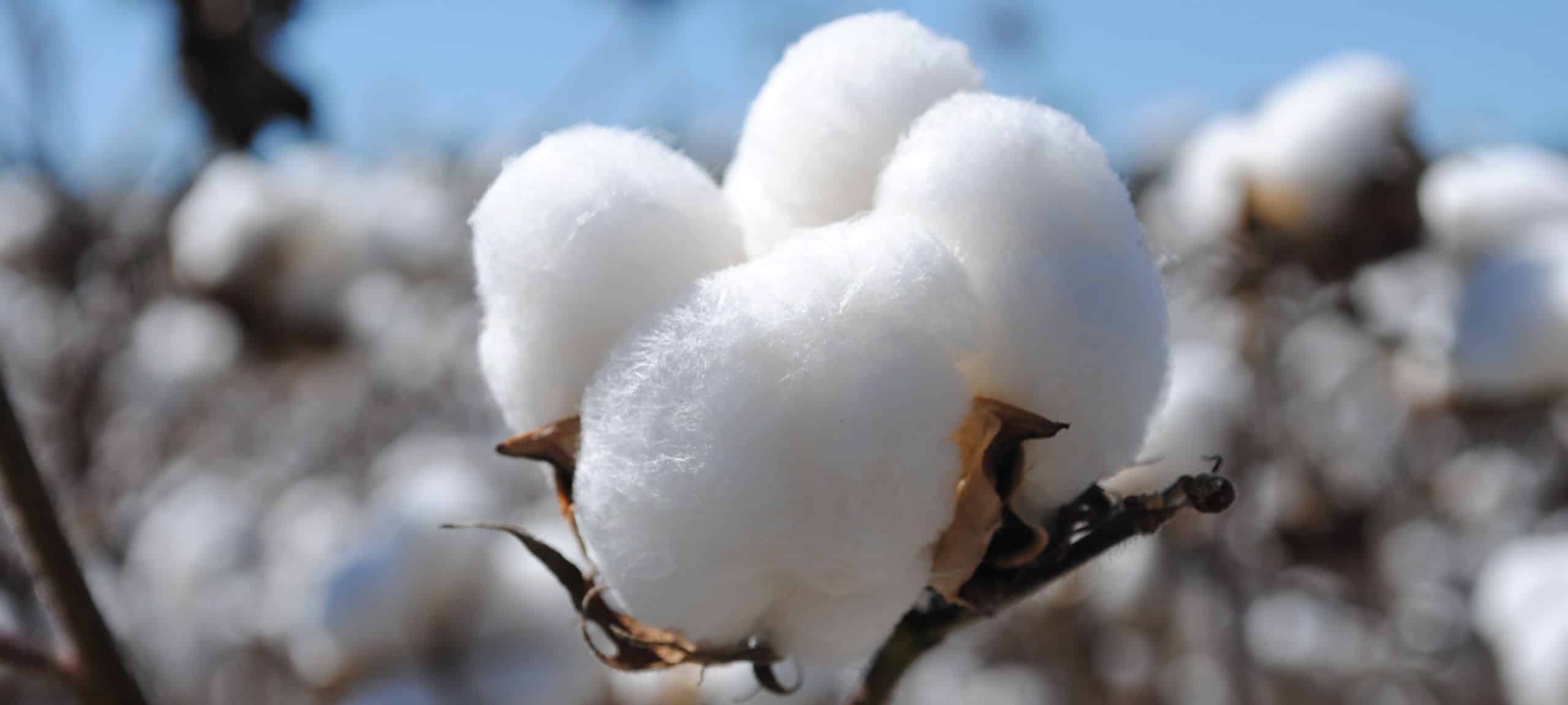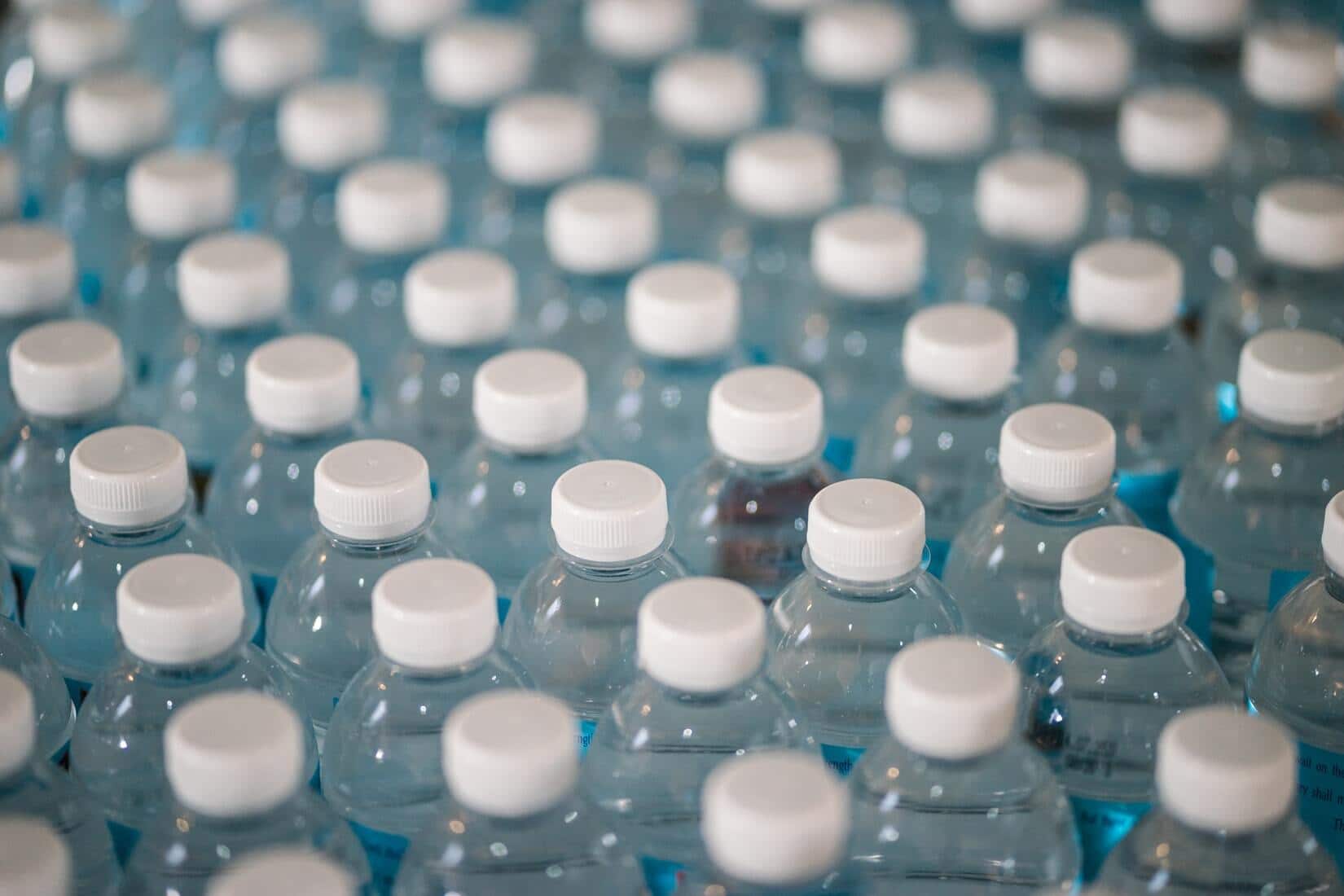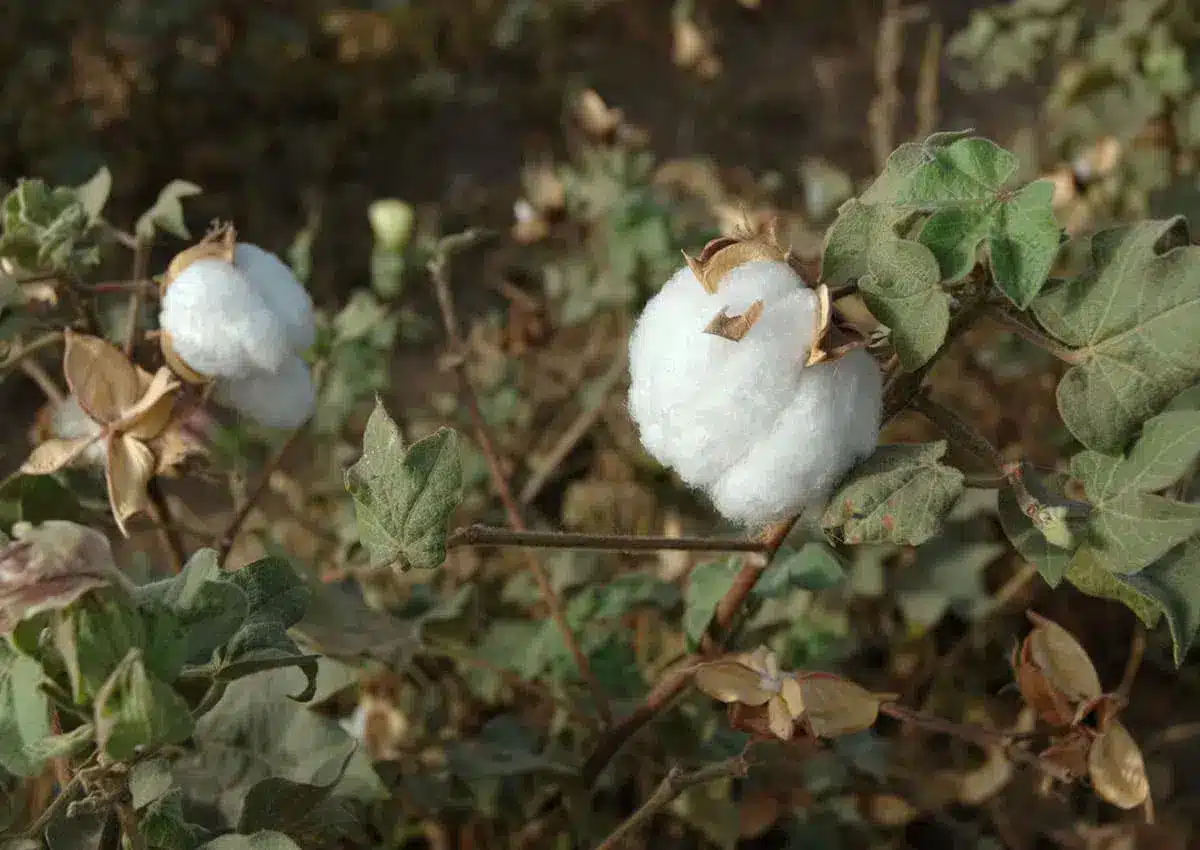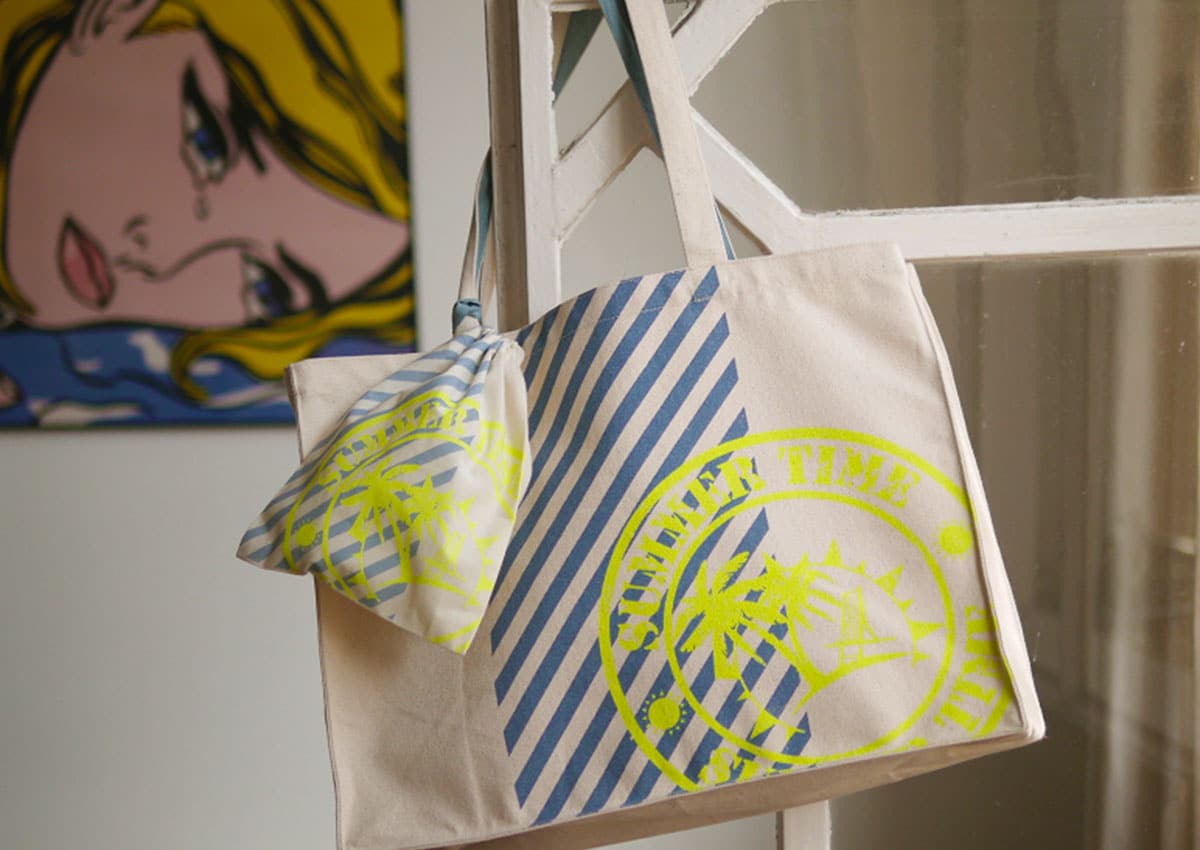Le coton est la fibre naturelle végétale la plus produite au monde. Très appréciée et répandue dans l’industrie du textile, cette matière peut être cultivée de façon conventionnelle (on parle alors de matière organique) ou biologique ce qui va déterminer son impact environnemental.
La culture biologique du coton est au cœur de notre démarche.
Elle est plus écologique, plus éthique et plus durable. Pour la confection de nos accessoires et de nos vêtements écologiques, nous avons choisi de travailler le coton biologique certifié GOTS.
Le coton bio c’est l’ADN des Mouettes Vertes. Découverte de sa culture, sa fabrication et son utilisation. Tout savoir sur le coton biologique, labellisé GOTS grâce aux Mouettes.
Chez Les Mouettes Vertes, le coton est naturellement bio !
S’il y a bien une matière qui nous colle à la peau, c’est bien le coton bio. Du t-shirt décontracté, à la chemise habillée, du pyjama tout doux au foulard fort utile, le coton bio est toujours de mise.
Il nous colle également à la bouche si je puis dire, tant les expressions font foison : ‘’c’est coton’’, ‘’filer un mauvais coton’’, ‘’élever son enfant dans du coton’’… A lecture de cet article, d’autres expressions vous viendront certainement à l’esprit !
Le coton bio fait bel et bien parti de notre quotidien et pourtant, nous ne nous posons finalement que très peu de questions sur lui.
Qu’est ce que le coton ?
Le coton est une fibre végétale qui entoure les graines des cotonniers. Le cotonnier, un arbuste pouvant mesurer jusqu’à 10 mètres de haut, pousse dans les régions tropicales et subtropicales arides.
En culture, on limite sa taille à un ou deux mètres pour faciliter le ramassage du coton. À la floraison apparaissent de grandes fleurs blanches ou jaunes à cinq pétales, sans odeur notable. Ensuite des capsules aux parois épaisses et rigides se développent. Lorsqu’elles s’ouvrent, elles laissent s’échapper des graines et des bourres de coton recouvertes d’une houppe de fibres blanchâtres et soyeuses pouvant mesurer entre 2 cm et 5 cm de long selon les variétés. On en extrait les fibres, qui sont justement utilisées pour nos vêtements et autres sacs.
Si le coton est une culture arable utilisée essentiellement pour ses fibres, les graines de coton peuvent également être broyées pour produire de l’huile destinée à la consommation humaine ou encore des tourteaux d’oléagineux destinés à la consommation animale.
Le coton biologique et sa culture
La culture du cotonnier nécessite une saison végétative longue, beaucoup de soleil et un total de 120 jours arrosés pour assurer la croissance puis un temps sec en fin de cycle végétatif pour permettre l’ouverture des capsules et éviter le pourrissement de la fibre. Le cotonnier supporte les climats tempérés à condition qu’il ne gèle pas.
Quels sont les bassins de culture du coton bio ?
La culture du cotonnier est majoritairement pluviale, par conséquent nous la rencontrons surtout en Afrique subsaharienne, aux États-Unis, en Inde, et en Chine. La culture pluviale est théoriquement possible dès 400 mm de précipitations annuelles. Pourtant, dans les faits, le cotonnier ne peut être cultivé sans irrigation qu’avec une pluviométrie supérieure à 700 mm/an, afin de pallier la variabilité inter-annuelle des pluies et les irrégularités de leur distribution. 5 260 litres d’eau sont nécessaires pour produire un kilo de coton (source CNRS). Cela explique que 40 % des surfaces cultivées en coton (Égypte, Ouzbékistan, Pakistan, Syrie) sont irriguées.
Qui cultive le coton bio ?
La culture du coton biologique se déroule dans plus de 90 pays, via des modes de production et des tailles d’exploitation très distincts : allant de la monoculture intensive à très hauts rendements, à la culture traditionnelle dans le cadre de petites exploitations agricoles. On estime que sa culture implique entre 30 et 50 millions de personnes, l’immense majorité d’entre eux étant de petits exploitants vivant dans des pays en voie de développement ou émergents. Ces derniers cultivent en moyenne entre 2 et 3 hectares de terre, où le coton ne représente qu’une partie des surfaces cultivées, le reste étant consacré aux cultures vivrières. La récolte y est encore très largement manuelle et faiblement mécanisée.
La transformation du coton bio… le fait de toute une filière
Cette fibre exemptée de produits toxiques est généralement transformée en fil qui est tissé pour fabriquer des tissus. La filière de textile réunit toute une chaîne d’acteurs : les fermiers, le filateur, le tisseur et le confectionneur.
Les pays producteurs de coton n’ont pas forcément d’industrie de transformation (filature/tissage/confection). Ainsi distinguons-nous :
- les pays exportateurs, du fait de l’absence d’industrie textile locale : l’Afrique de l’Ouest, l’Australie, les Etats-Unis, l’Ouzbékistan
- des pays importateurs, pour lesquels l’achat de coton complète la production nationale, couvrant ainsi les besoins de l’industrie textile du pays (Chine, Inde, Pakistan, Brésil).
Quelques chiffres sur le coton bio
On produit environ 809 kilos de coton par seconde dans le monde, soit 25,5 millions de tonnes de coton en fibre malgré la tendance à la raréfaction des surfaces de culture (chiffres 2012). 80% de la production mondiale de coton sont cultivés dans l’hémisphère nord et les Etats-Unis sont les premiers exportateurs de coton devant l’Inde. En un demi-siècle, la production mondiale de coton a plus que doublé pour atteindre 27,4 millions de tonnes en 2011, face à une consommation estimée à 25,38 millions de tonnes (1).
- Production mondiale de coton 2010-2011
25,11 Mt. Dont Chine : 26%, Inde : 22%, États-Unis : 16%, Brésil : 8%, Pakistan : 8%. Prévisions 2011-2012 (janvier 2012) : 26,75 Mt. - Consommation mondiale de coton 2010-2011
24,89 Mt. Dont Chine : 40%, Inde : 18% ; Pakistan : 9% ; Turquie : 5 %. Prévisions 2011-2012 (janvier 2012) : 23,95 Mt. - Exportations mondiales de coton 2010-2011
7,77 Mt. Dont Etats-Unis : 40%, Inde : 14%, Ouzbékistan : 7%, Australie : 7%, Brésil : 6%
Le coton bio : coté jour… mais aussi côté nuit
Le coton côté jour
- c’est 70 % du marché mondial des textiles,
- 25 millions de tonnes produites chaque année,
- 2.4 % des surfaces cultivées de la planète.
Le coton côté nuit
- c’est 25 % des insecticides utilisés dans le monde
- le recours au chlore et à des agents de métaux lourds comme le plomb ou le chrome pour le blanchiment et la teinture de la matière.
- un million de personnes intoxiquées par ces derniers
- et 20 000 morts chaque année.
Ce sont également des centaines de millions de mètres cubes d’eau d’irrigation qui pourraient servir à augmenter les rendements des cultures vivrières, et finalement une des plus grandes catastrophes écologiques du XXe siècle : l’assèchement de la mer d’Aral.
Pour les Mouettes Vertes, c’est le coton bio ou rien !
Alors pour nous, dès la création des Mouettes Vertes en 2005, le coton bio certifié GOTS, respectueux de l’environnement, s’est imposé !
Le coton biologique, concrètement, c’est :
- L’absence d’insecticides et de pesticides de synthèse (il peut exister des pesticides naturels)
- Une consommation d’eau réduite de moitié (sans épandage de produits chimiques, la consommation d’eau diminue)
- La rotation des cultures pour oxygéner la terre, la préserver et casser le cycle des maladies
Et pour les fermiers, la culture du coton bio a de nombreux avantages :
- L’amélioration de la santé de leur famille (suppression des vertiges, des allergies et des troubles respiratoires)
- Une autonomie financière plus grande (suppression des prêts contractés pour acheter des pesticides voire des OGM)
Qu’est ce que coton biologique certifié GOTS ?
Le GOTS (Global Organic Textile Standard) est le standard définissant les différentes critères sociaux et environnementaux à respecter. Le GOTS est un véritable gage de confiance et de qualité. Il atteste l’origine biologique des fibres. Le GOTS c’est aussi l’association réunissant les principaux acteurs mondiaux de la filière textile (planteurs, négociants, filateurs, tisseurs, distributeurs, consommateurs). Cette association a été créée en 2007 afin de définir un cahier des charges unique de la chaîne de textile écologique.
Les Mouettes Vertes travaillent avec ECOCERT et CONTROL UNION. Ainsi, sur chaque sac Les Mouettes Vertes, retrouverez-vous l’étiquette GOTS.
Les Mouettes Vertes et le coton bio équitable
Il n’est pas toujours évident de faire la part des choses entre le greenwashing et les réels engagement pris par les marques.
De multiples labels existent qui garantissent chacun des aspects différents de la production.
Si le coton certifié biologique garantit que la matière première a été cultivée sans pesticides ; le coton équitable garantit des revenus décents pour les producteur de cette fibre.
Face au coton conventionnel, le coton bio certifié GOTS garantit le respect sur toute la filière, du fermier au confectionneur, d’une approche écologique et éthique. Tous les produits des Mouettes Vertes respectent ce cahier des charges.
A présent, si une amie vous demande ”mais à quoi ça sert le coton bio pour un sac ? ça ne colle pas à la peau…” Répondez lui qu’effectivement le coton n’est pas forcément en contact direct avec la peau… par contre, n’hésitez pas à lui dire qu’un produit labellisé GOTS est réalisé dans des conditions respectueuses de la nature et des hommes. Et que cela est tout aussi important !
Autre idée, n’hésitez pas à faire un sondage auprès de vos amis… connaissent-ils réellement le coton bio?








